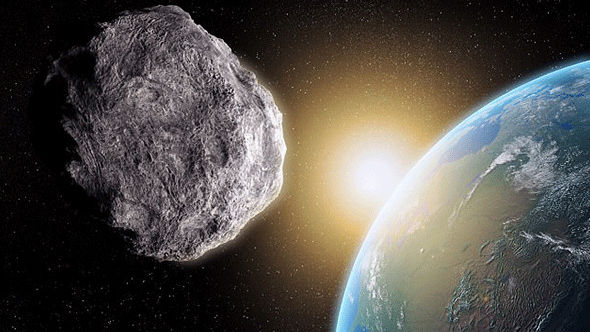
A house-sized asteroid grazed past Earth on Oct. 13, passing harmlessly inside the Moon's orbit, as predicted, to give experts a rare opportunity to rehearse for a real strike threat in future.
Dubbed 2012 TC4, the object's passing allowed scientists to practice spotting incoming objects, predicting their size and trajectory, and tracking their passage with a global network of telescopes and radars.
"We pretended that this was a critical object and exercised our communication," said Detlef Koschny of the European Space Agency's Near-Earth Object programme.
The trial run was "a big success," he said, despite some instruments not working as planned.
A radar system in Puerto Rico, for example, was out of service due to damage from the recent hurricane there.
"This is exactly why we do this exercise, to not be surprised by these things," Koschny said.
The asteroid flitted past around 0541 GMT at less than 44,000 kilometers from Earth's surface, just above the 36,000 km plane at which hundreds of geosynchronous satellites orbit our planet.
This was about an eighth of the distance between the Earth and the Moon.
Scientists had predicted that TC4 was between 10 and 30 meters wide. In the end, it measured some 10-12 meters, the smaller end of the range.
"This means it must be very bright," to make it appear bigger, said Koschny. Observations also revealed that TC4 spins around its axis in about 12 minutes, "which is quite fast."
The asteroid was about half the size of the meteoroid that exploded in the atmosphere over Chelyabinsk in central Russia in 2013 with the kinetic energy of 30 Hiroshima atom bombs.
The resulting shockwave blew out the windows of nearly 5,000 buildings and injured more than 1,200 people.
While the Chelyabinsk event caught everyone unawares, TC4 is one of thousands of space rocks whose whereabouts are known. Millions are not.
On a 609-day loop around the Sun, TC4 will return to Earth in 2050 and 2079, Koschny's colleague Ruediger Jehn has told.
It will not hit Earth on its next approach but could come close in 2079 -- another reason for studying its route through the Solar System.
With a one-in-750 chance of hitting in 2079, TC4 is listed at number 13 on the "risk list" of objects posing even the remotest impact threat.
As its full name suggests, the asteroid was first spotted five years ago when it called on Earth at about double the distance, before disappearing from view.